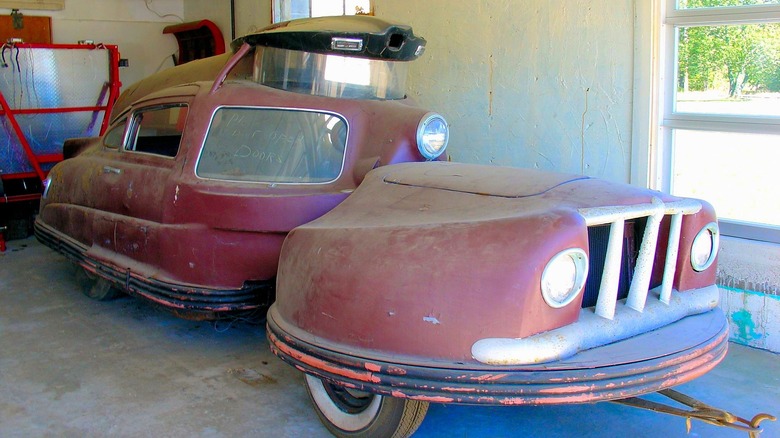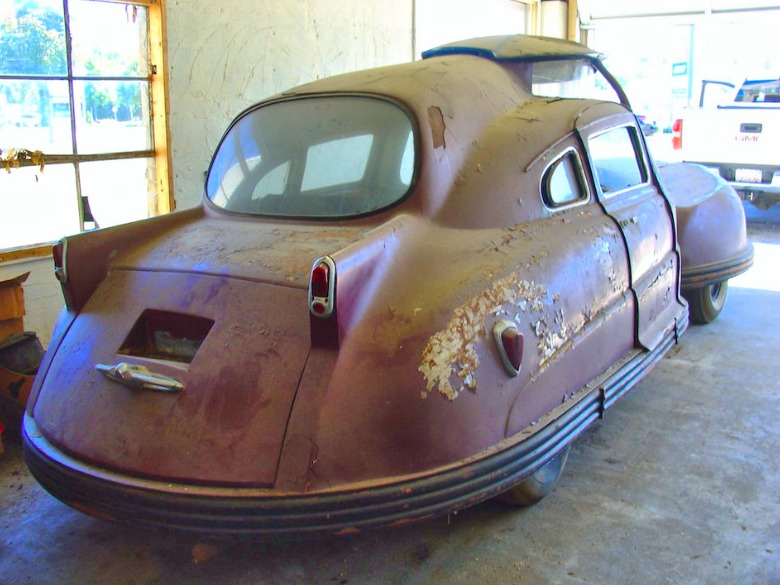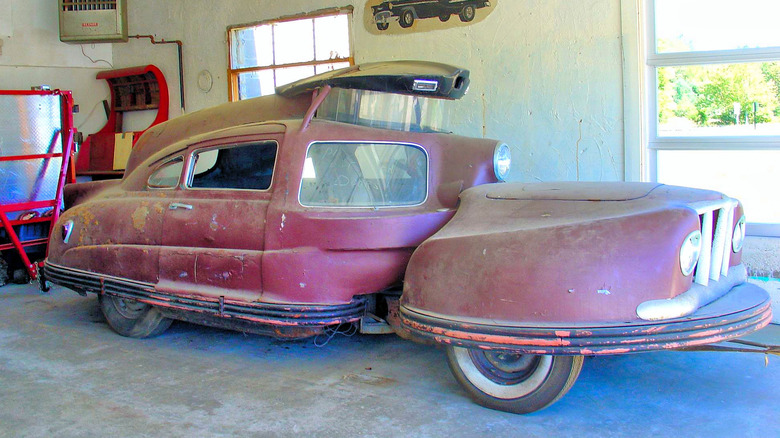This Bizarre 'Safest Car' Concept Is Being Saved
Sir Vival, a one-of-its-kind car rocking a two-section design and once hailed as the safety car of the future, has found a new home in hopes that it gets a much-deserved restoration. As per Hemmings, the experimental car is shifting base from its old abode of Bellingham Auto Sales' garage — owner Edward T. Moore graciously allowing SlashGear to use the images you see here — to the Lane Motor Museum run by Jeff Lane in Nashville, TN.
The car is nothing short of a legend in automobile history, primarily because of its unique design and safety features: some of which have since become a staple for cars in the years to come. Heavily modified from a 1948 Hudson, the cyclopean car had the engine and a pair of wheels attached to the front segment, while the rear portion had a cockpit-like design with a centered steering wheel. The two portions were connected with a hinge, allowing them to pivot independently.
The driver's segment had a dome-like glass with an all-round view, while the wipers were stationary. Instead of sweeping wipers as found on other cars, Sir Vival rotated the curved glass, instead, to clean it. The car had soft steel bumpers all around, side rear lights, seat belts, and even an air intake at the top that looks strikingly similar to the concept of an engine inlet on a modern F1 car.
The safety car of the future that never was
Gracing the cover of Mechanix Illustrated's April 1959 edition, the unique car's rear portion was described as the "club room" and had space for three passengers. The core idea behind Sir Vival's two-part design was that one half would move to absorb the impact in instances of a collision, while the side-pivoting doors in the rear half were supposed to stay shut should an accident occur.
Designed by Walter C. Jerome, only one prototype was ever built. Ambitious and outlandish, Sir Vival failed to find any takers, especially among the key automakers of the 1950s, or even road safety enthusiasts. Jerome had plans to sell up to 12 cars each year at $10,000 a pop, with ambitions of producing one unit a day should the demand be there, but — at a time when a well-equipped mainstream luxury car cost half that amount — series production unfortunately never happened.
Ambitious ideas that came years before modern safety standards
"Call me a crusader if you will," Jerome wrote in his compelling pitch for the concept car, "but I believe, and hundreds of the nations (sic) automotive writers and newspapermen agree, that I have something that America desperately needs." The engineer went on to blast the automakers of the time for their solid-body designs which, he argued, put occupant safety second.
Even with that passion, Sir Vival never got further than this single example, but at least some of the safety ideas it championed found their way to mass-manufactured cars in the years to come. Seatbelts, for instance, became a legal requirement in new cars in the US in 1968, and while Jerome's vision of two flexible sections may not have been adopted, the end goal of body structure that absorbs the shock of collisions rather than passing it on into occupants is now a fundamental part of new vehicle design.


